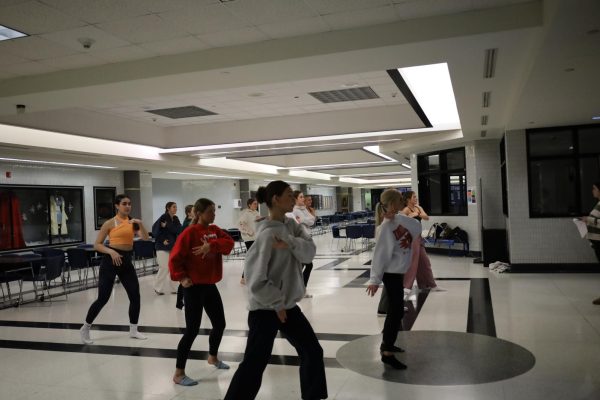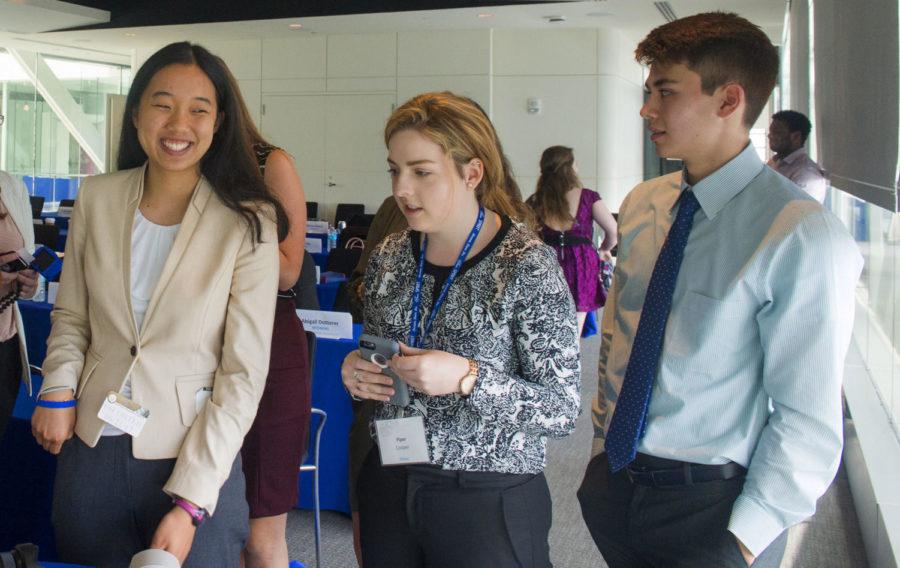Column: Journalism Isn’t Dying
Nowadays, it seems like fake news is everywhere, especially in politics. President Donald Trump uses the term all the time (claiming that he invented the phrase), and the Senate Intelligence Committee warned of the Russian fake news threat on social media during recent congressional hearings with Facebook, Twitter and Google.
In fact, Collins Dictionary announced the phrase as the word of the year on Nov. 2. This isn’t particularly surprising, but it’s also important to recognize that amid what seems like a sea of fake news, there are more legitimate journalistic outlets that provide the public with timely, accurate information.
It’s important to realize that other scholastic journalists are doing the same thing. Contrary to popular belief, journalism is not dying. This summer, I went to the Al Neuharth Free Spirit and Journalism Conference as Indiana’s representative. There, I met 50 other amazing students (one from each state and D.C.) I met students who managed to pull their newspapers through despite no school funding whatsoever, students who spoke at national conventions, students who fought for their First Amendment rights when their school systems tried to censor them. Talking with these people was incredibly humbling; feeling the excitement radiating from their words was nothing short of eye-opening.
We met Pulitzer Prize winners, Freedom Riders from the civil rights era, and the editor-in-chiefs of National Geographic and the Washington Post. We toured the Newseum and the headquarters of USA Today. Most importantly, we met people who have dedicated their lives to spreading the truth.
These leaders in journalism emphasized again and again: journalism is not dying. Far from it, in fact. Print journalism may bring less revenue than before, but more content has simply moved online. In fact, this way, consumers can connect to news more than ever before: through websites and social media, news outlets can update readers in real time. (The New York Times even has its own Virtual Reality app that “puts you at the center of the stories that only we can tell.” I really love this app; kudos to New York Times!)
Admittedly, before I went, I was skeptical about the future of journalism as well. Yes, the challenges journalism faces are many. But the people I met convinced me that as long as even a small group is passionate about spreading the truth, journalism will never die.
Your donation will support the student journalists of Carmel High School - IN. Your contribution will allow us to purchase equipment and cover our annual website hosting costs.


































![British royalty are American celebrities [opinion]](https://hilite.org/wp-content/uploads/2024/03/Screenshot-2024-03-24-1.44.57-PM.png)



















![Review: Quiet on Set: The Dark Side of Kids TV is the long awaited exposé of pedophilia within the children’s entertainment industry [MUSE]](https://hilite.org/wp-content/uploads/2024/04/unnamed.jpg)
![Review: “The Iron Claw” cannot get enough praise [MUSE]](https://hilite.org/wp-content/uploads/2024/04/unnamed.png)
![Review: “The Bear” sets an unbelievably high bar for future comedy shows [MUSE]](https://hilite.org/wp-content/uploads/2024/03/unnamed.png)
![Review: “Mysterious Lotus Casebook” is an amazing historical Chinese drama [MUSE]](https://hilite.org/wp-content/uploads/2024/03/0.webp)
![Thea Bendaly on her Instagram-run crochet shop [Biz Buzz]](https://hilite.org/wp-content/uploads/2024/03/IMG_0165-1200x838.jpg)
![Review in Print: Maripaz Villar brings a delightfully unique style to the world of WEBTOON [MUSE]](https://hilite.org/wp-content/uploads/2023/12/maripazcover-1200x960.jpg)
![Review: “The Sword of Kaigen” is a masterpiece [MUSE]](https://hilite.org/wp-content/uploads/2023/11/Screenshot-2023-11-26-201051.png)
![Review: Gateron Oil Kings, great linear switches, okay price [MUSE]](https://hilite.org/wp-content/uploads/2023/11/Screenshot-2023-11-26-200553.png)
![Review: “A Haunting in Venice” is a significant improvement from other Agatha Christie adaptations [MUSE]](https://hilite.org/wp-content/uploads/2023/11/e7ee2938a6d422669771bce6d8088521.jpg)
![Review: A Thanksgiving story from elementary school, still just as interesting [MUSE]](https://hilite.org/wp-content/uploads/2023/11/Screenshot-2023-11-26-195514-987x1200.png)
![Review: When I Fly Towards You, cute, uplifting youth drama [MUSE]](https://hilite.org/wp-content/uploads/2023/09/When-I-Fly-Towards-You-Chinese-drama.png)
![Postcards from Muse: Hawaii Travel Diary [MUSE]](https://hilite.org/wp-content/uploads/2023/09/My-project-1-1200x1200.jpg)
![Review: Ladybug & Cat Noir: The Movie, departure from original show [MUSE]](https://hilite.org/wp-content/uploads/2023/09/Ladybug__Cat_Noir_-_The_Movie_poster.jpg)
![Review in Print: Hidden Love is the cute, uplifting drama everyone needs [MUSE]](https://hilite.org/wp-content/uploads/2023/09/hiddenlovecover-e1693597208225-1030x1200.png)
![Review in Print: Heartstopper is the heartwarming queer romance we all need [MUSE]](https://hilite.org/wp-content/uploads/2023/08/museheartstoppercover-1200x654.png)






























![Joseph Broman, Mu Alpha Theta sponsor, grades tests for his honors precalculus/trigonometry class. Broman said, “I’m retiring from the Math Club next year and I’m just going to do Mu Alpha Theta so I can focus on that one and we can do more [speaker series] first semester.”](https://hilite.org/wp-content/uploads/2024/03/IMG_9502-600x450.jpg)